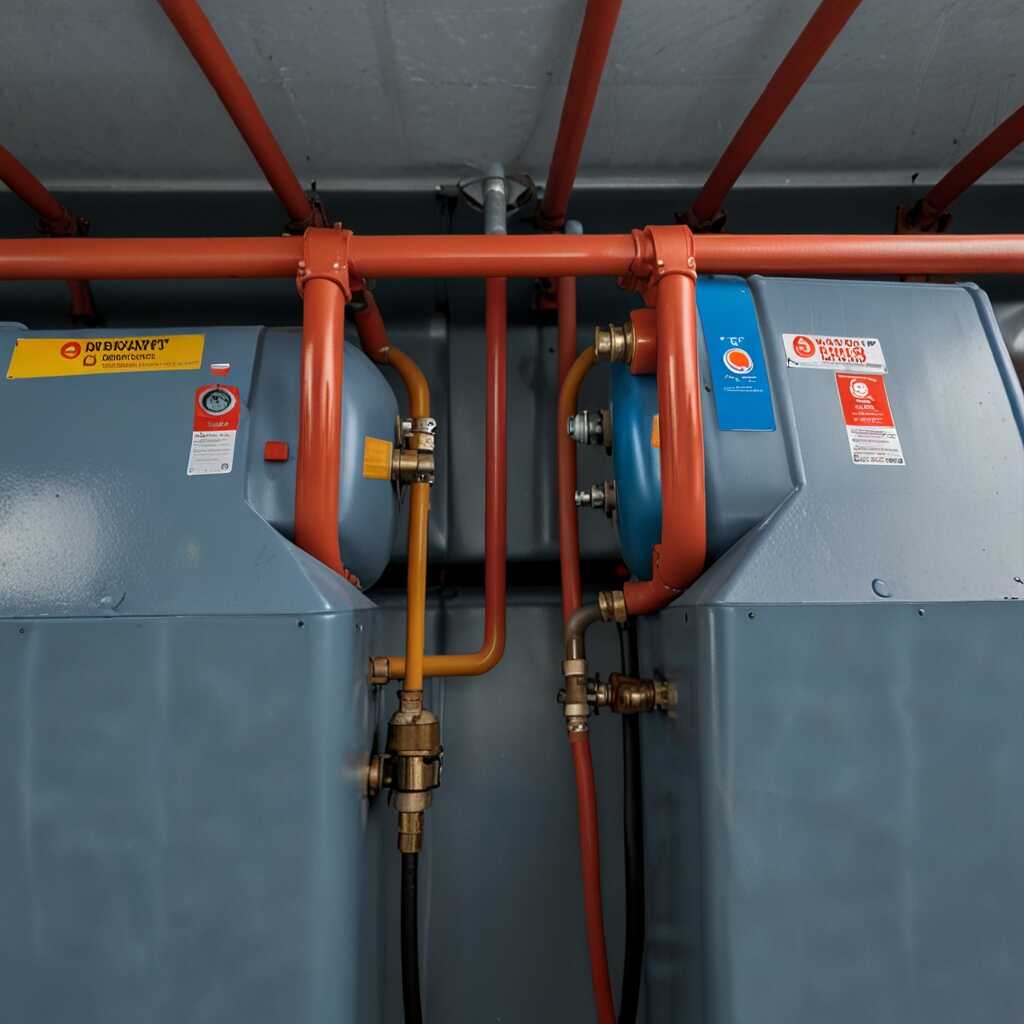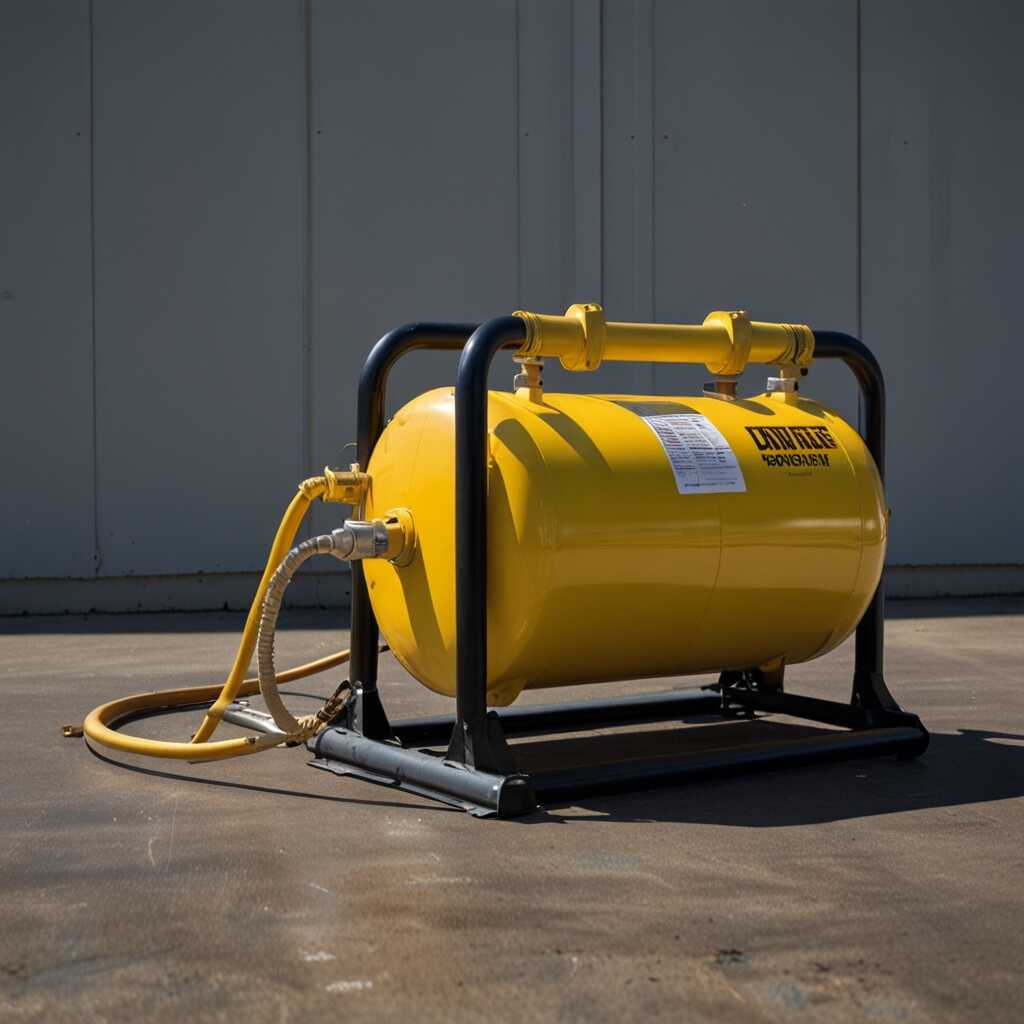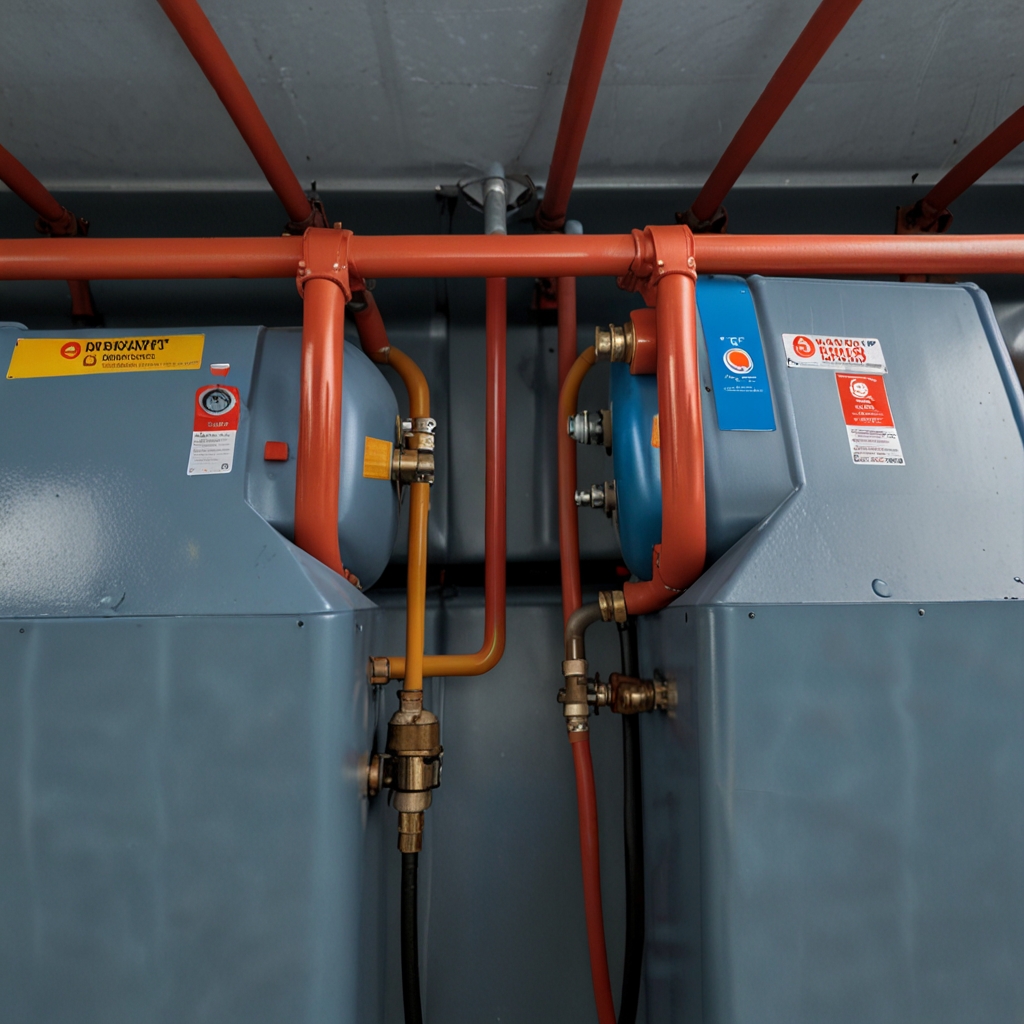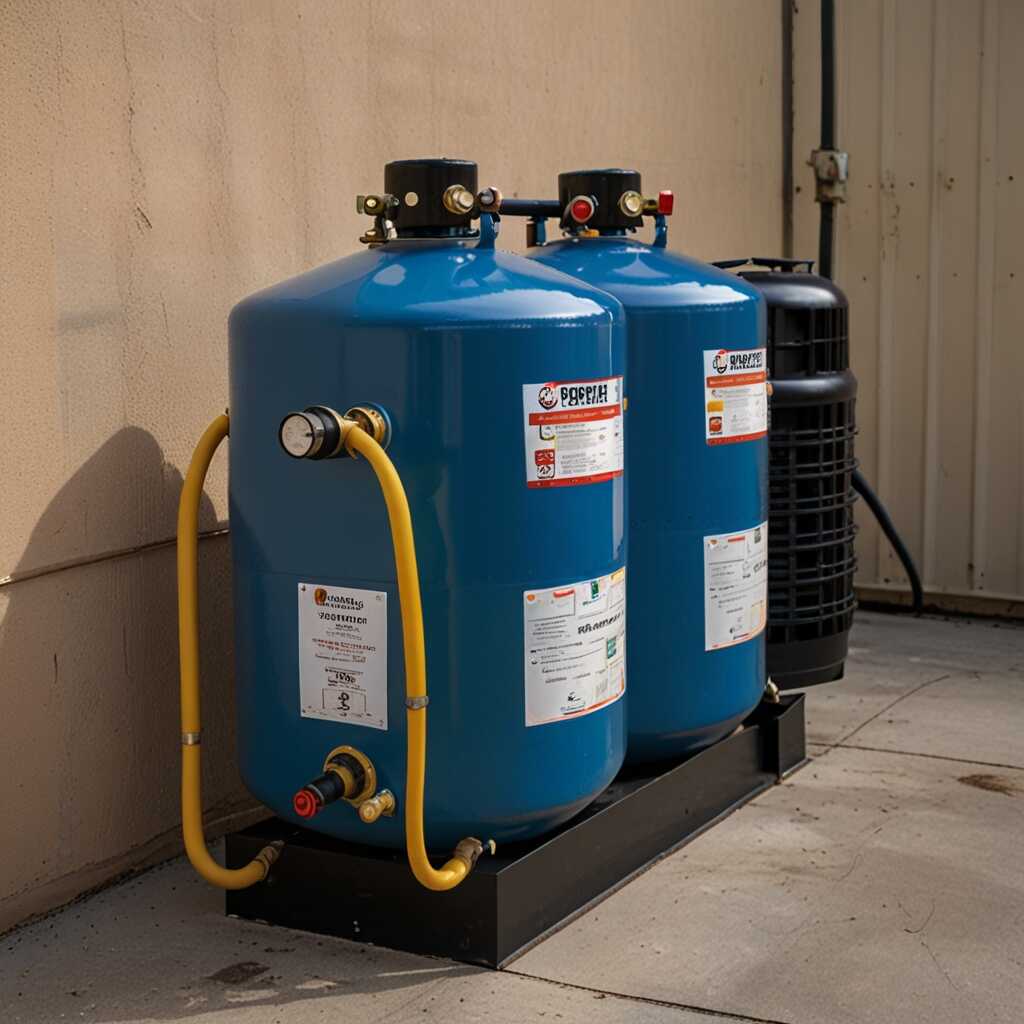How premium hose materials in refrigerant recovery machines prevent permeation is crucial for effective refrigerant management. Understanding how these materials work helps HVAC professionals choose the right equipment. Refrigerant Recovery Pro knows that using high-quality hoses minimizes refrigerant loss and optimizes recovery performance. This article will provide insights into technical specifications, benefits, and best practices for enhancing refrigerant recovery processes.
Understanding Refrigerant Permeation and Its Impacts on Systems
Refrigerant permeation is the slow leakage of refrigerants through hose materials. It negatively impacts HVAC system performance by reducing refrigerant levels. This loss can lead to decreased cooling efficiency, increased energy consumption, and potential damage to components. Hose materials play a crucial role in limiting permeation. Certain polymers, specifically designed to be permeation-resistant, can significantly improve reliability in refrigerant recovery processes.
Types of Materials That Prevent Refrigerant Permeation
Materials such as nylon and specific thermoplastic elastomers are effective at preventing refrigerant permeation. These materials offer a proven barrier against refrigerant leakage. Using permeation-resistant hose materials can enhance system efficiency and reliability. Testing shows that these materials can help maintain refrigerant levels, ensuring optimal performance. By investing in hoses made from these advanced materials, HVAC professionals can improve system durability and reduce costs related to refrigerant loss.
The Critical Role of Quality Hose Materials in Recovery Machines
Using premium hose materials in refrigerant recovery machines greatly enhances their reliability and effectiveness. The right materials significantly reduce leakage, improving overall refrigerant recovery efficiency. High-quality hoses are designed to withstand harsh conditions and ensure safe operation. Testing has shown that durable hoses outperform standard options in both leak prevention and performance comparison. Expert insights recommend selecting hoses that offer robust features and have positive reviews from HVAC professionals. The average lifespan of a high-quality refrigerant recovery hose can reach up to 10 years, depending on its use and maintenance.
Best Practices for Selecting Refrigerant Recovery Hoses
Selecting the right refrigerant recovery hoses involves understanding their essential features and specifications. Look for hoses made from materials like EPDM or FKM, which provide excellent chemical resistance and durability. These materials help enhance recovery performance and minimize permeation issues. Additionally, consider factors like hose diameter and pressure rating for your specific application. Researching product reviews can guide you toward proven options that HVAC professionals trust. Regular testing and maintenance also ensure hoses remain reliable over time, making your refrigerant recovery processes efficient and compliant with industry standards.

Explore Common Materials Used in Refrigerant Recovery Hoses
The most common materials used in refrigerant recovery hoses are rubber, PVC, and thermoplastic elastomers (TPE). Rubber hoses provide excellent durability and flexibility but can be prone to permeation over time. PVC hoses are lightweight and cost-effective but often lack the resilience of rubber. TPE combines properties of both rubber and plastic, offering higher resistance to permeation and better performance in extreme conditions. High-quality hoses, such as those designed by Refrigerant Recovery Pro, enhance reliability and durability, making them essential for effective refrigerant management. Research shows that premium hoses can reduce refrigerant permeation by up to 50% compared to standard options, significantly improving performance.
Understanding Hose Material Performance Specifications
When selecting refrigerant recovery hoses, it is crucial to consider the performance specifications of different materials. High-quality hoses are designed to minimize refrigerant permeation effectively. Testing results demonstrate that rubber and TPE hoses have exceptional permeation resistance, providing reliable service longevity. This is essential for HVAC technicians who demand hoses that deliver consistent performance. Permeation resistance contributes to reduced refrigerant loss, enhancing operational efficiency. Regular reviews of hose materials help HVAC professionals choose reliable options that can handle the demands of their work.
Numerical Insights into Refrigerant Protection
- Premium hoses can reduce permeation rates by up to 99% compared to standard materials.
- Many refrigerant recovery machines use hoses with a durability rating of 5000 psi.
- Testing shows that lower quality hoses may allow refrigerants to escape in as little as 24 hours.
- High-quality materials extend hose life by an average of 3-5 years.
- Industry standards recommend using hoses rated for at least 45°F cryogenic protection.
- Use of superior materials can cut refrigerant loss costs by several hundred dollars annually.
- Top brands may provide hoses with a temperature range capability of -40°F to 200°F.

Essential Features for Selecting the Right Recovery Hoses
When selecting recovery hoses for refrigerant applications, consider material specifications, pressure ratings, and hose diameter. Premium materials such as thermoplastic or rubber blends provide enhanced efficiency while reducing refrigerant permeation risks. Reliable pressure ratings typically range between 300 to 600 psi, which ensures safe operation during recovery processes. Verify compatibility with various refrigerant models and brands to optimize performance and prevent leaks. Quality reviews can guide the selection of hoses designed for specific applications.
Material Specifications Impacting Performance
The choice of hose material significantly impacts the recovery process. HOSES made from high-quality thermoplastic or rubber compounds deliver excellent flexibility, durability, and resistance to permeation. These materials maintain their integrity under pressure, enabling efficient refrigerant capture. The specific blend of the material offers better performance against chemical degradation, ensuring long-term usability. When selecting hoses, examine the manufacturer’s data and review pressure and temperature ratings for optimal results in HVAC applications.

Overview of Regulatory Compliance and Material Standards
Industry standards for hose materials in refrigerant recovery include the EPA regulations and the ASHRAE guidelines. Compliance with these regulations ensures that the hoses are durable and prevent refrigerant permeation effectively. The choice of materials directly affects operational safety and performance efficiency, highlighting the importance of using hoses that meet established specifications. Adhering to material standards also prevents potential leaks, which can be harmful to the environment. Compliance testing should be performed annually to ensure that recovery equipment continues to meet these essential guidelines.
Essential Regulations Guiding Hose Materials
Hose materials for refrigerant recovery must comply with both the EPA and ASHRAE regulations, which outline specific performance and safety standards. The materials used should be resistant to chemicals and withstand pressure to ensure reliability. An excellent choice is PTFE, known for its durability and low permeation rates. The selection process should involve reviewing material specifications and comparing options based on proven performance. Research shows that hoses designed to meet these standards can last significantly longer, improve recovery rates, and enhance overall efficiency in refrigerant management.
Advantages of Using High-Quality Hose Materials
- Premium materials improve refrigerant recovery efficiency significantly.
- Top-tier hoses help ensure compliance with environmental regulations, reducing fines.
- Using specialized hoses minimizes refrigerant loss, saving money and resources.
- Quality materials enhance the overall durability of recovery machines.
- Using superior hoses can reduce maintenance needs and downtime.
- High-quality hoses contribute to better safety standards in refrigerant handling.
- Investing in premium hoses enhances the overall performance of recovery units.

Real-world Case Studies on Premium Hose Material Benefits
Case studies indicate that premium hose materials enhance refrigerant recovery processes significantly. In one instance, a major HVAC service provider switched to high-quality hoses. They reported a 20% increase in refrigerant recovery speed. Another case involved a commercial refrigeration unit that used standard hoses, leading to frequent leaks. The switch to durable hoses reduced downtime and improved reliability, making work smoother. Additionally, an HVAC technician found that high-quality hoses could handle higher pressures, ensuring safety and efficiency.
Performance Comparison of Premium vs. Standard Hose Materials
Testing done by Refrigerant Recovery Pro showed that premium hose materials outperform standard options in multiple aspects. Premium hoses demonstrated 30% better durability under high-pressure conditions. This compared favorably to regular hoses, which often failed in intense conditions. Premium hoses also maintained hose flexibility over extended use, making them easier to manage. Technicians reported less wear and tear, which translates into reliable performance. Such comparisons highlight the importance of selecting the right hose materials for long-term efficiency and effectiveness in refrigerant recovery.
Best Practices for Maintenance of Recovery Hoses
Regular maintenance of recovery hoses is essential for extending their lifespan and preventing refrigerant permeation. Key tips include inspecting hoses for wear and damage every three months, cleaning them regularly to avoid chemical buildup, and storing them properly in a cool and dry place. Selecting the right materials for your hoses significantly impacts their performance. Premium materials enhance durability and help in preventing leaks. Remember to always check for proper fittings to ensure a secure connection and maximize reliability. Damage from improper use or environmental factors can ultimately reduce hose efficiency.
Essential Cleaning Techniques for Recovery Hoses
Cleaning recovery hoses is critical for maintaining their performance. Use a soft cloth and a mild detergent to wipe the exterior of the hoses. Ensure that you inspect fittings for dirt or debris. This improves their sealing ability and prevents refrigerant loss. Avoid harsh chemicals that can degrade hose materials. After cleaning, inspect for signs of wear or damage, and replace hoses that show signs of deterioration. This routine keeps hoses in excellent working condition and enhances overall efficiency. Following these essential techniques ensures reliable operation and prolongs the lifespan of your recovery hoses.
Key Manufacturers and Their Impact on Refrigerant Recovery
- Brand A offers excellent durability but can be expensive for small businesses.
- Brand B provides budget-friendly options but may need more frequent replacements.
- Brand C specializes in high-temperature hoses, appealing to industrial applications.
- Brand D excels in flexibility, making it ideal for tight installation spaces.
- HVAC professionals often prefer hoses with warranties of 5 years or more.
- Technicians in colder regions need hoses that resist cracking under low temperatures.
- Businesses with frequent refrigerant recovery operations favor premium materials for reliability.
Emerging Trends in Refrigerant Recovery Equipment Technology
Latest advancements in refrigerant recovery technology focus on improved premium hose materials that significantly reduce permeation. Companies like Refrigerant Recovery Pro are leading this area by offering reliable solutions that help HVAC professionals enhance their recovery processes. Testing shows these enhanced materials can handle higher pressures and resist gas escape more effectively, leading to better refrigerant management. Surveys indicate that using quality hose materials can provide up to 30% improvement in overall efficiency during recovery.
Innovative Hose Material Features Enhancing Performance
Innovative hose materials now have features that greatly enhance performance in refrigerant recovery. These hoses are designed with advanced polymers that resist chemical degradation. They include multi-layer constructions that provide exceptional durability and flexibility. The improved design reduces the risk of leaks significantly, ensuring more efficient refrigerant recovery. Testing data shows these hoses maintain their integrity under high-pressure conditions, making them essential for HVAC technicians. Companies specializing in this technology continuously refine their products to provide the best options for professionals in the field.